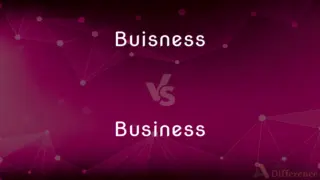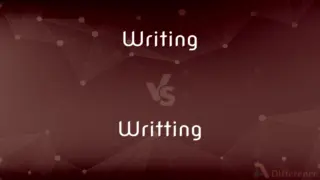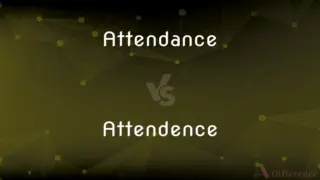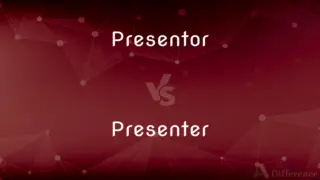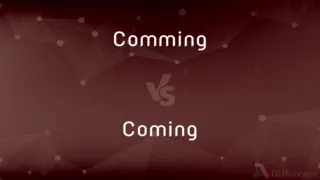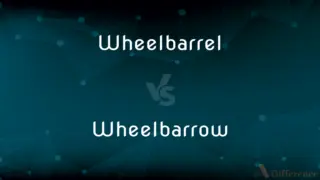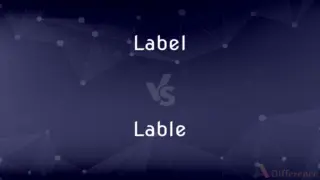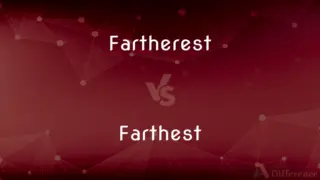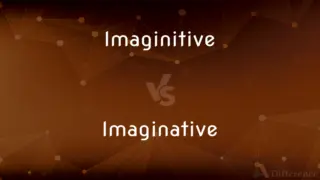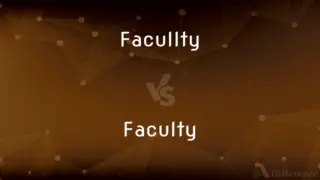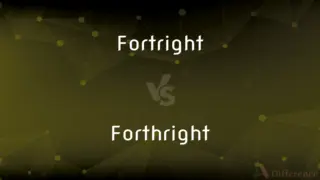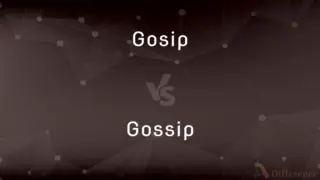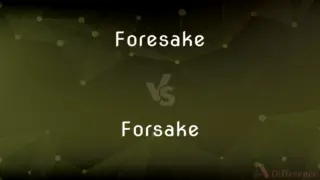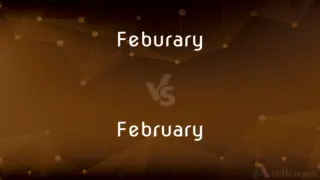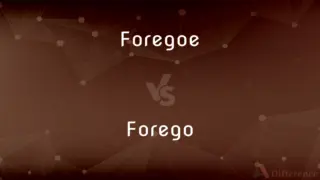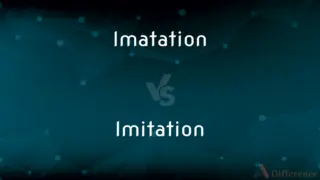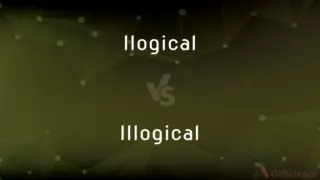Prooves vs. Proofs — Which is Correct Spelling?
By Tayyaba Rehman — Updated on March 21, 2024
"Prooves" is an incorrect spelling, while "Proofs" is the correct plural form of "proof," which refers to evidence or demonstration of a fact or truth.

Table of Contents
Which is correct: Prooves or Proofs
How to spell Proofs?

Prooves
Incorrect Spelling

Proofs
Correct Spelling
ADVERTISEMENT
Key Differences
There's no double "o" in the plural form; keep it singular like in "proof."
Memorize the phrase: "The proofs are on the roof."
Think of "roof" in "proof." Just like "roofs," it becomes "proofs."
"Proove" sounds like "prove," which is a verb. But for evidence, it's "proof" with "proofs" as its plural.
Align "proofs" with other nouns that end with "f" and become "fs" in plural, like "leaf" to "leaves."
ADVERTISEMENT
How Do You Spell Proofs Correctly?
Incorrect: Multiple prooves were presented at the trial.
Correct: Multiple proofs were presented at the trial.
Incorrect: The lawyer needed more prooves to win the case.
Correct: The lawyer needed more proofs to win the case.
Proofs Definitions
In mathematics, proofs are formal demonstrations of theorems.
His research paper was packed with intricate proofs.
In photography, proofs are preliminary versions of prints.
She selected her favorite picture from the proofs.
The evidence or argument that compels the mind to accept an assertion as true.
The validation of a proposition by application of specified rules, as of induction or deduction, to assumptions, axioms, and sequentially derived conclusions.
A statement or argument used in such a validation.
Convincing or persuasive demonstration
Was asked for proof of his identity.
An employment history that was proof of her dependability.
The state of being convinced or persuaded by consideration of evidence.
Determination of the quality of something by testing; trial
Put one's beliefs to the proof.
The establishment of the truth or falsity of an allegation by evidence.
The evidence offered in support of or in contravention of an allegation.
The alcoholic strength of a liquor, expressed by a number that is twice the percentage by volume of alcohol present.
A trial sheet of printed material that is made to be checked and corrected. Also called proof sheet.
A trial impression of a plate, stone, or block taken at any of various stages in engraving.
A trial photographic print.
Any of a limited number of newly minted coins or medals struck as specimens and for collectors from a new die on a polished planchet.
(Archaic) Proven impenetrability
"I was clothed in Armor of proof" (John Bunyan).
Fully or successfully resistant; impervious. Often used in combination
Waterproof watches.
A fireproof cellar door.
Of standard alcoholic strength
Proof liquor.
Used to proofread or correct typeset copy
A proof copy of the manuscript.
To make a trial impression of (printed or engraved matter).
To proofread (copy).
To activate (dormant dry yeast) by adding water.
To work (dough) into proper lightness.
To treat so as to make resistant
Proof a fabric against shrinkage.
(Printing) To proofread.
To become properly light for cooking
The batter proofed overnight.
Plural of proof.
Samples of the copy and layout of a printed document for review by the author or a proofreader before mass printing.
Proofs are evidence or arguments establishing a fact or the truth of a statement.
The lawyer presented multiple proofs in court.
Proofs in printing are trial impressions made to check a design.
The designer checked the color proofs before final printing.
Proofs can refer to test samples of a coin or stamp.
The collector was eager to acquire the rare proofs from the mint.
Proofs Meaning in a Sentence
The proofs of the theorem were displayed on the board.
He kept all the proofs of purchase for his electronics.
The proofs in the argument were compelling and convincing.
The mathematician presented his proofs at the conference.
In the book publishing process, authors review proofs before final printing.
To apply for the refund, she submitted all the necessary proofs.
In court, the prosecution presented several crucial proofs.
Before making a decision, the committee reviewed all the proofs.
For ancient claims, archaeologists often seek tangible proofs.
The teacher asked for proofs of the students' hypotheses.
She admired the photo proofs before selecting the final images for the album.
The historian cited multiple proofs from primary sources in his book.
She collected all the proofs of her work to create a portfolio.
The lawyer organized the proofs meticulously for the upcoming trial.
The proofs of identity required for the application were listed clearly.
In philosophy, the concept of proofs varies greatly across different schools of thought.
The proofs for the new coin designs were approved by the committee.
The detective gathered all the proofs needed to solve the case.
He showed me the proofs of his artwork before the final print.
The scientist's proofs were published in a prestigious journal.
They discussed the proofs provided by climate science in the debate.
In logic, proofs are essential for demonstrating the validity of propositions.
She appreciated the digital proofs provided by the photographer.
He requested to see the proofs of the article before it went to print.
To ensure accuracy, the editor went over the proofs of the manuscript carefully.
Common Curiosities
Why is it called Proofs?
It's called "proofs" because it denotes evidence or verification of something.
What is the verb form of Proofs?
The verb form is "prove."
Which preposition is used with Proofs?
"Of" is commonly used, as in "proofs of identity."
Which vowel is used before Proofs?
Typically, the vowel "o" as in "no proofs."
What is the singular form of Proofs?
The singular form is "proof."
Which article is used with Proofs?
Both "a" and "the" can be used, depending on the context.
Is Proofs a negative or positive word?
It is neutral; its connotation depends on context.
Is Proofs a noun or adjective?
"Proofs" is a noun.
What is the pronunciation of Proofs?
It's pronounced as /pruːfs/.
What is the root word of Proofs?
The root word is "proof."
Which conjunction is used with Proofs?
Any conjunction can be used depending on the sentence, but "and" is common.
What is the plural form of Proofs?
The plural form is "proofs."
Is Proofs a collective noun?
No, it is not a collective noun.
Is the word Proofs is Gerund?
No, it is not a gerund.
Is the word “Proofs” a Direct object or an Indirect object?
It can be used as a direct object, e.g., "She showed me the proofs."
What is the opposite of Proofs?
Disproof or refutation.
Which determiner is used with Proofs?
Determiners like "these," "those," "many," etc., can be used with "proofs."
Is Proofs an adverb?
No, "proofs" is not an adverb.
Is the word Proofs is imperative?
No, it is not imperative.
What is a stressed syllable in Proofs?
The entire word "proofs" is stressed as it is a single syllable.
What is another term for Proofs?
Evidence or verification.
Is the Proofs term a metaphor?
It can be used metaphorically, but the word itself isn't inherently a metaphor.
How many syllables are in Proofs?
One syllable.
Is Proofs a vowel or consonant?
"Proofs" is a word containing both vowels and consonants.
Is Proofs a countable noun?
Yes, it is countable.
How do we divide Proofs into syllables?
It's not divided; it's one syllable.
What part of speech is Proofs?
It is a noun.
How is Proofs used in a sentence?
"The scientist provided multiple proofs to support his theory."
Is Proofs an abstract noun?
It can be considered abstract when referring to evidence or verification, but it can also be tangible, like in printing or photography.
Share Your Discovery

Previous Comparison
Whilest vs. Whilst
Next Comparison
Improvment vs. ImprovementAuthor Spotlight
Written by
Tayyaba RehmanTayyaba Rehman is a distinguished writer, currently serving as a primary contributor to askdifference.com. As a researcher in semantics and etymology, Tayyaba's passion for the complexity of languages and their distinctions has found a perfect home on the platform. Tayyaba delves into the intricacies of language, distinguishing between commonly confused words and phrases, thereby providing clarity for readers worldwide.













